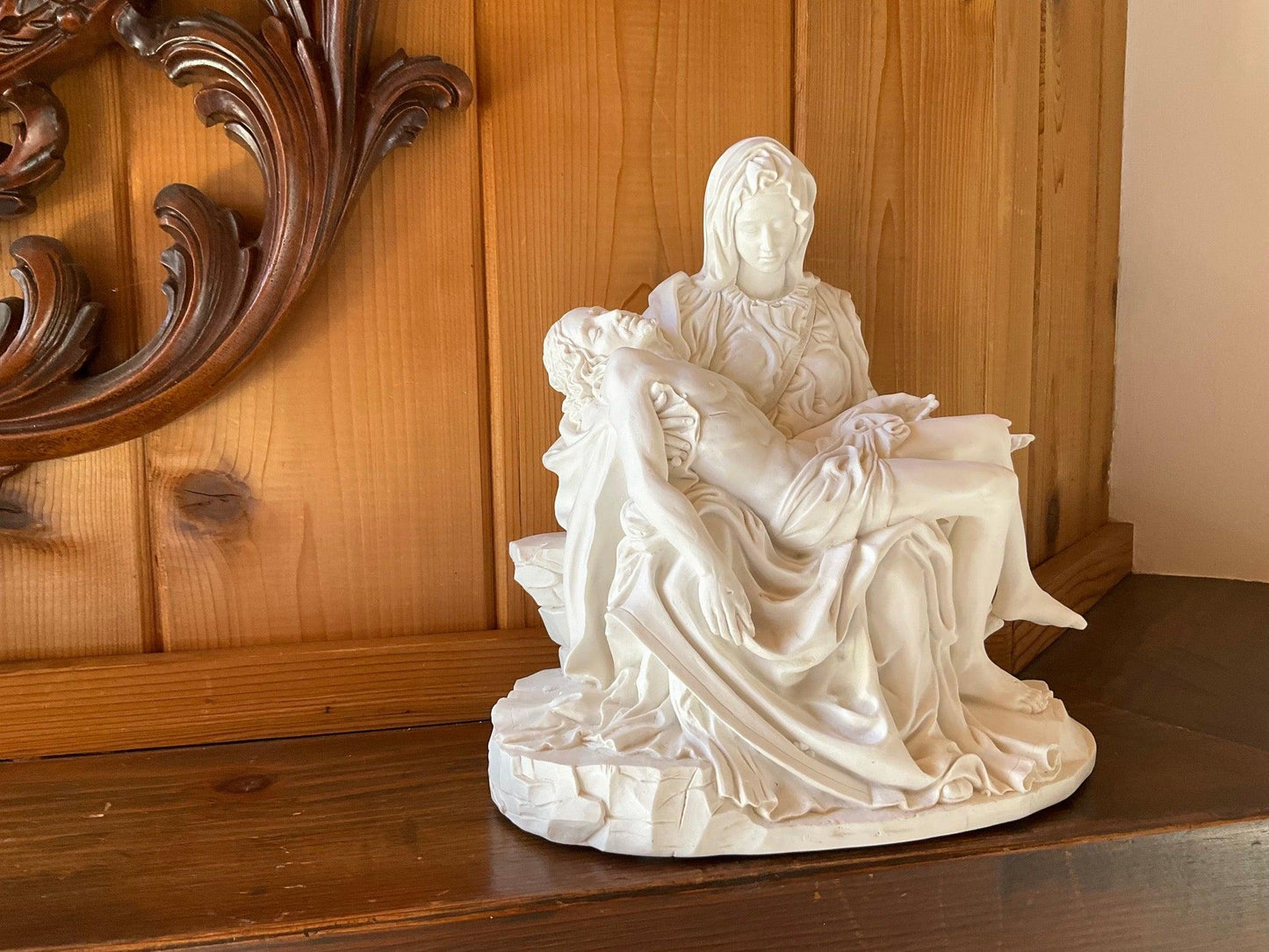Mother and Son Sculpture, Lamentation Design, Vatican Style, 8.75-Inch Decorative Figure by Michelangelo
Mother and Son Sculpture, Lamentation Design, Vatican Style, 8.75-Inch Decorative Figure by Michelangelo
SKU:MIC02
In stock
Couldn't load pickup availability
The Pieta (1499) by Michelangelo
This masterpiece of Italian Renaissance sculpture is located in St. Peter's basilica in Rome. Michelangelo was commissioned to make it by the French envoy to Rome, Cardinal Jean de Billheres. This explains the subject matter which was unusual for Italy at the time. Maria has been depicted at a surprisingly young age. Her pure lifestyle proves to have protected her from life's ravages.
The Pieta is the only work Michelangelo ever signed. His biographer Vasari wrote that he signed the ribbon across Maria's chest because rumors were circulating that Cristoforo Solari has sculpted the work and not him. Afterwords, Michelangelo was ashamed of his unseemly pride. The original statue measures 1.74 m x 1.95 m (68.5 inches x 76.8 inches).
- This reproduction of the Pieta is part of the Parastone Museum Collection. It has remarkable details including a clear representation of Michelangelo's name as he signed it across Mary's ribbon over her chest. (PN MIC02)
- Made from resin and stone, description card included.
- The white resin will have some random grey marks to simulate the grain of true marble.
- Measures: 8.75 in H x 8.75 in W x 5.5 in D. Weight 8.8 lbs.
Michelangelo (1475-1564):
As an artist, sculptor, architect and poet Michelangelo di Lodovico Buonarroti Simoni was the archetype of the Renaissance artist, the universal man (uomo universale). As the son of the mayor of Caprese he spent all his time drawing, much to his father's chagrin. His mother died young and he was raised by a nanny who was married to a sculptor. Michelangelo proved to be so talented that as a fifteen year old he was noticed by the powerful artists' patron Lorenzo de Medici. His creativity and work ethic were unstoppable. He sculpted two of his most famous works before he was 30: The Pieta and the colossal sculpture of David.
A number of years later, he had made such a name for himself that Pope Julius II asked him to paint the ceiling of the Sistine Chapel. The artist spent four long years painting the frescoes which garnered admiration from all for their emotional expressiveness their terribilita. His ground breaking style was later considered the inspiration for Mannerism. ll Divino was a living legend, the first artist to have a biography written about him whilst still alive. However, he was not a pleasant human. Contemporaries described him a a manic, rough, arrogant and sober living, grumpy man, who only lived for his art.


















